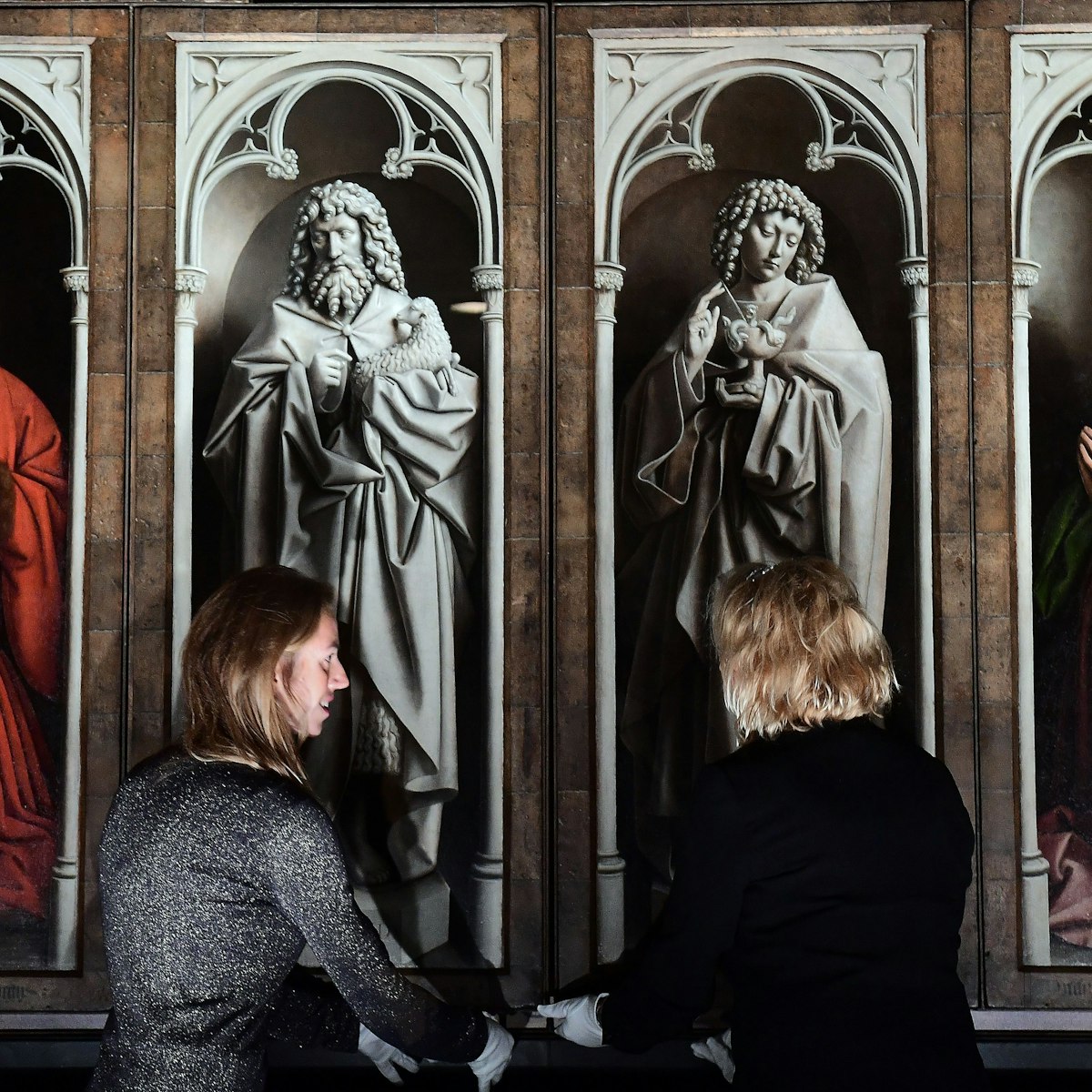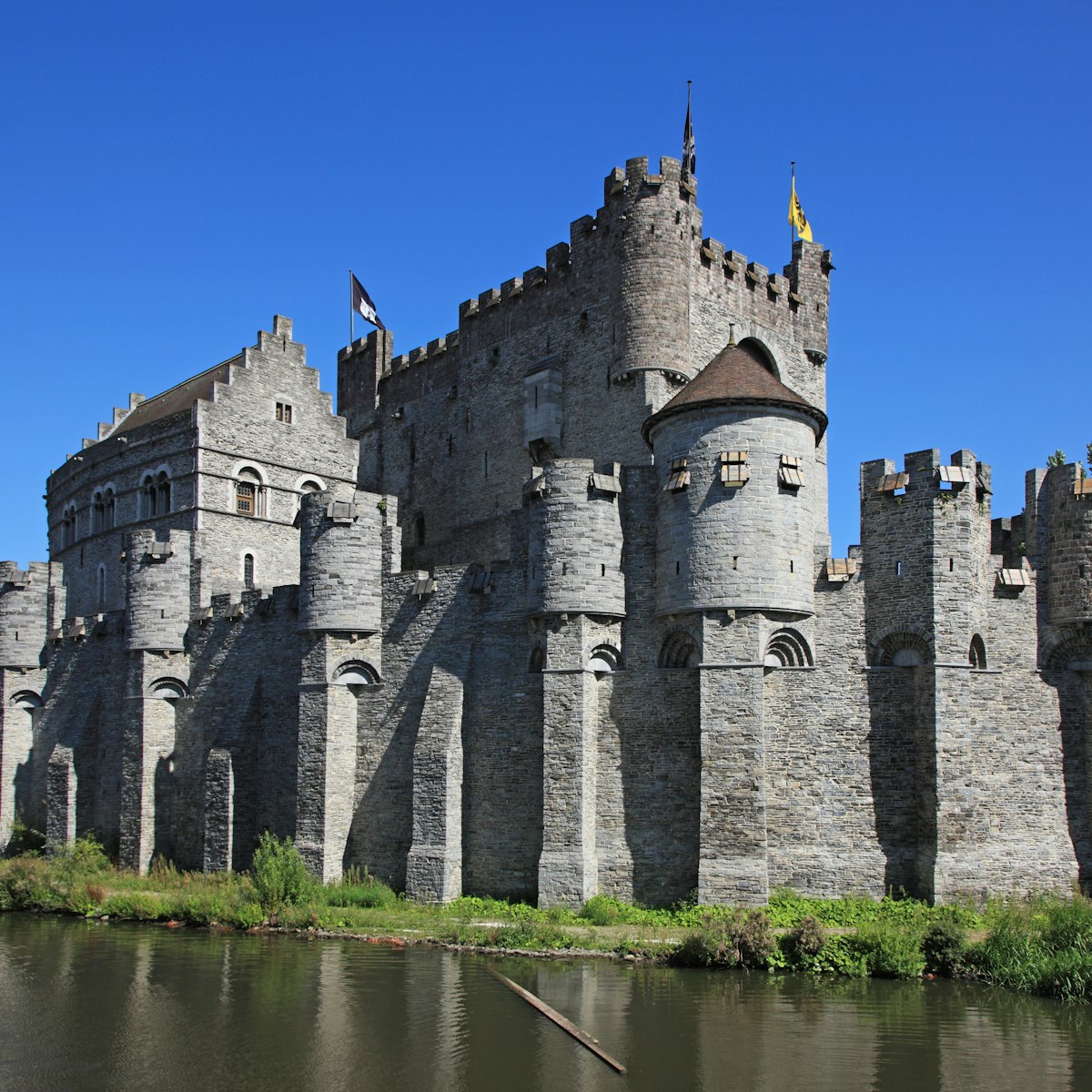
Art enthusiasts swarm the Sint-Baafskathedraal to glimpse The Adoration of the Mystic Lamb (De Aanbidding van het Lams God), a lavish representation of medieval religious thinking that is one of the earliest-known oil paintings. Completed in 1432, it was painted as an altarpiece by Flemish Primitive artists the Van Eyck brothers, and has 20 panels.
The work represents an allegorical glorification of Christ's death: on the upper tier sits God the Father flanked by the Virgin and John the Baptist. On the outer panels are the nude Adam and Eve. The lower tier centres on the lamb, symbolising the sacrifice made by Christ, surrounded by all manner of religious figures and a landscape dotted with local church towers. The luminous colours and the rich, detailed crowd scenes are stunning.
The painting has had an illustrious history – the Calvinists nearly destroyed it; Austria's Emperor Joseph II was horrified by the nude Adam and Eve and had the panels replaced with clothed versions (the originals are now back in place); and the painting was marched off to Paris during the French Revolution and was later stolen by the Germans who concealed it in an Austrian salt mine during WWII. The panel De Rechtvaardige Rechters (The Fair Judges), stolen in 1934, is still missing, although in June 2018, engineer Gino Marchal and youth fiction author Marc de Bel created quite a stir by publicly declaring they had substantial evidence to suggest the missing panel was buried beneath the town's Kalandeberg square. At time of writing, Ghent officials were taking the claims quite seriously, but for many, the story reeks of a publicity stunt. Stay tuned as the mystery unfolds.
 Publish for free
Publish for free

 zzdtravel
zzdtravel

















